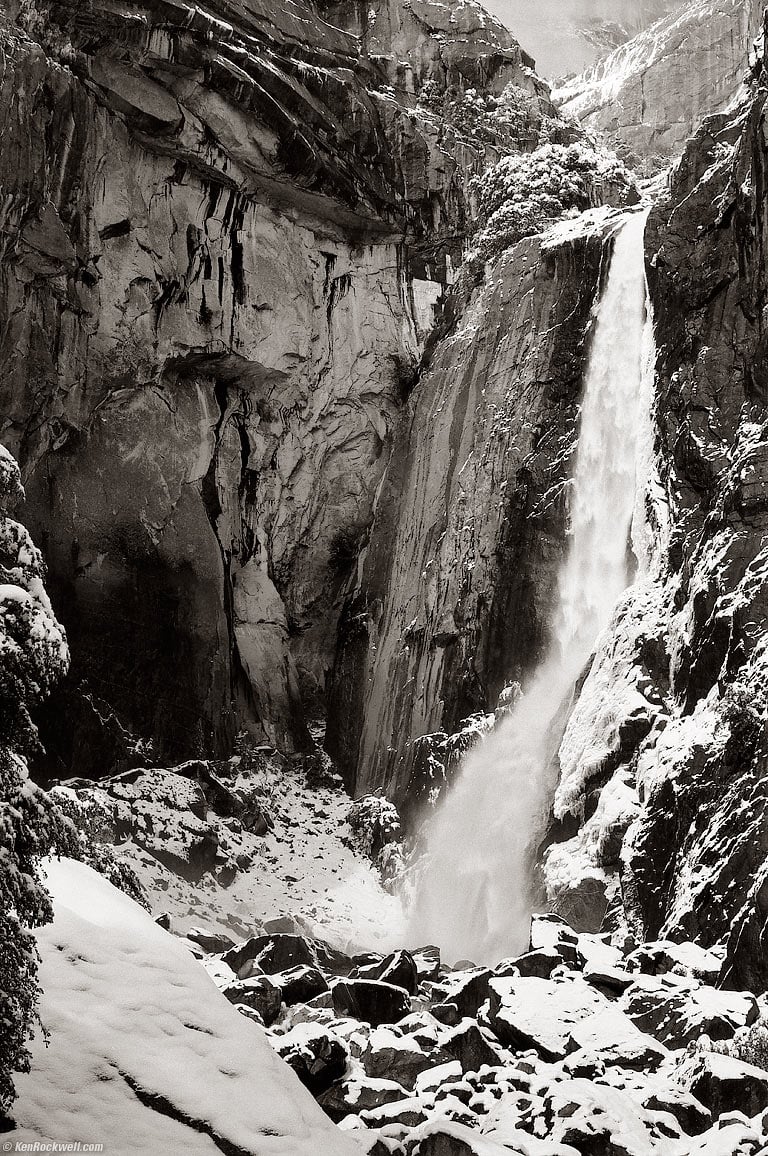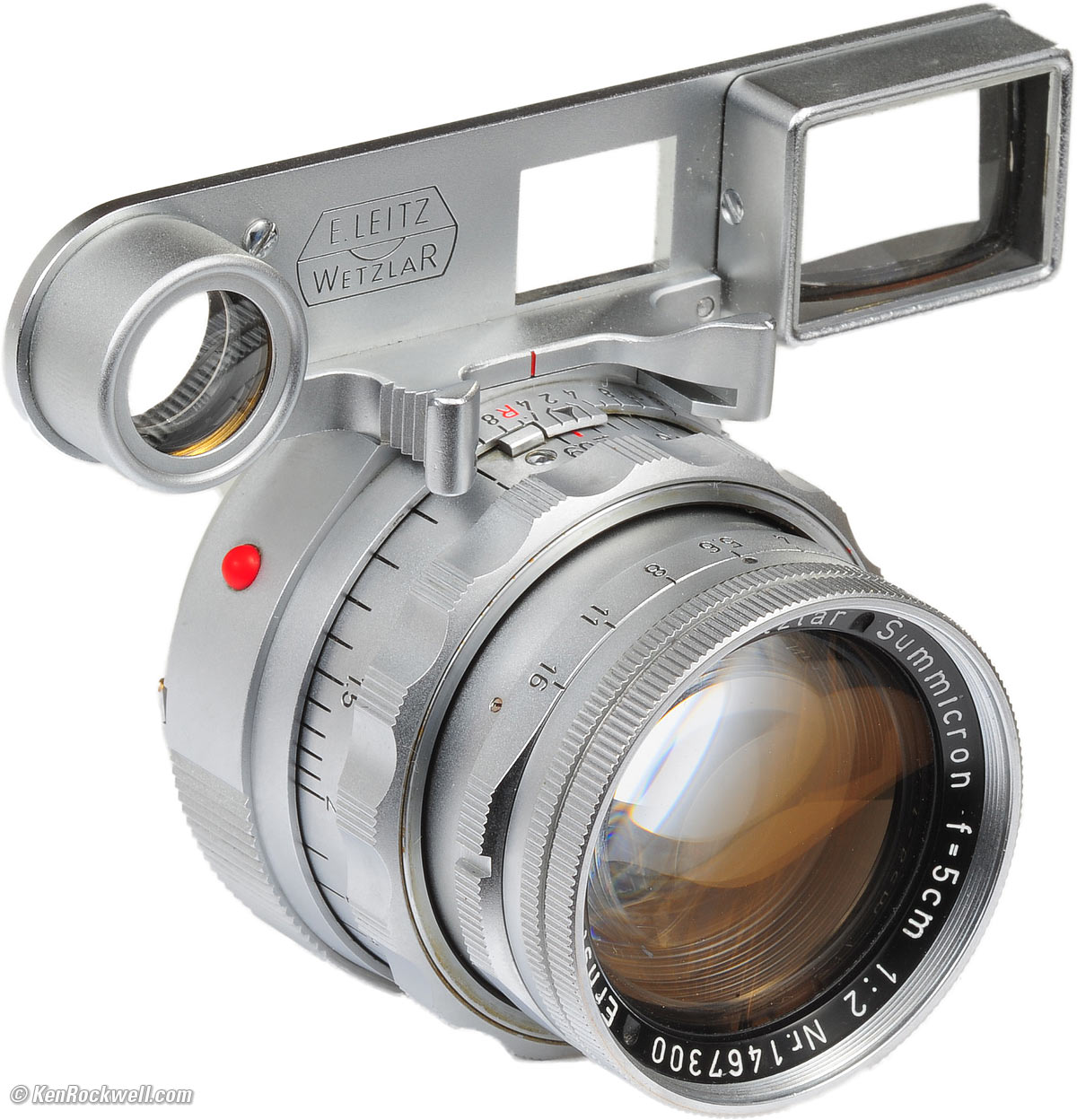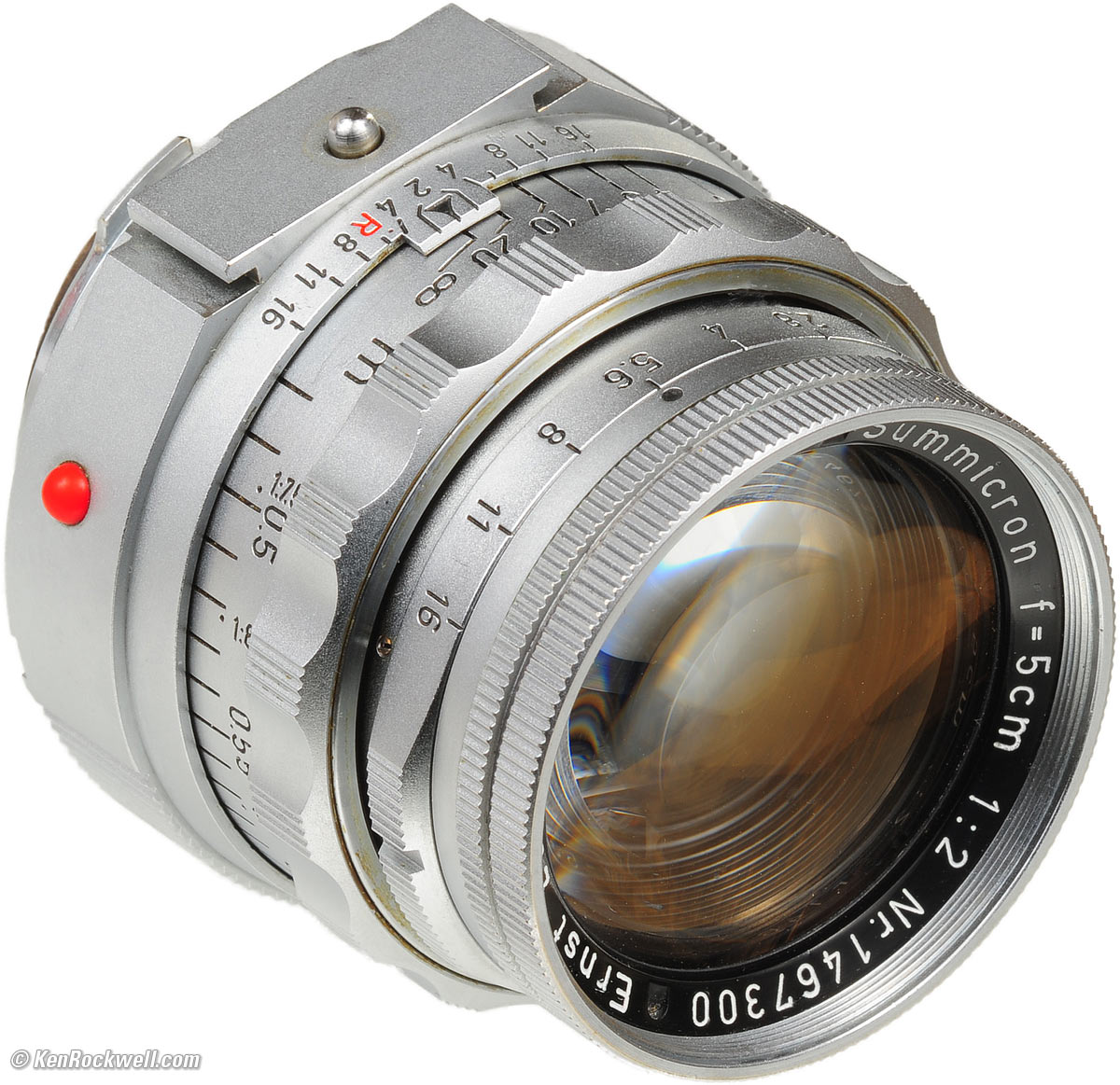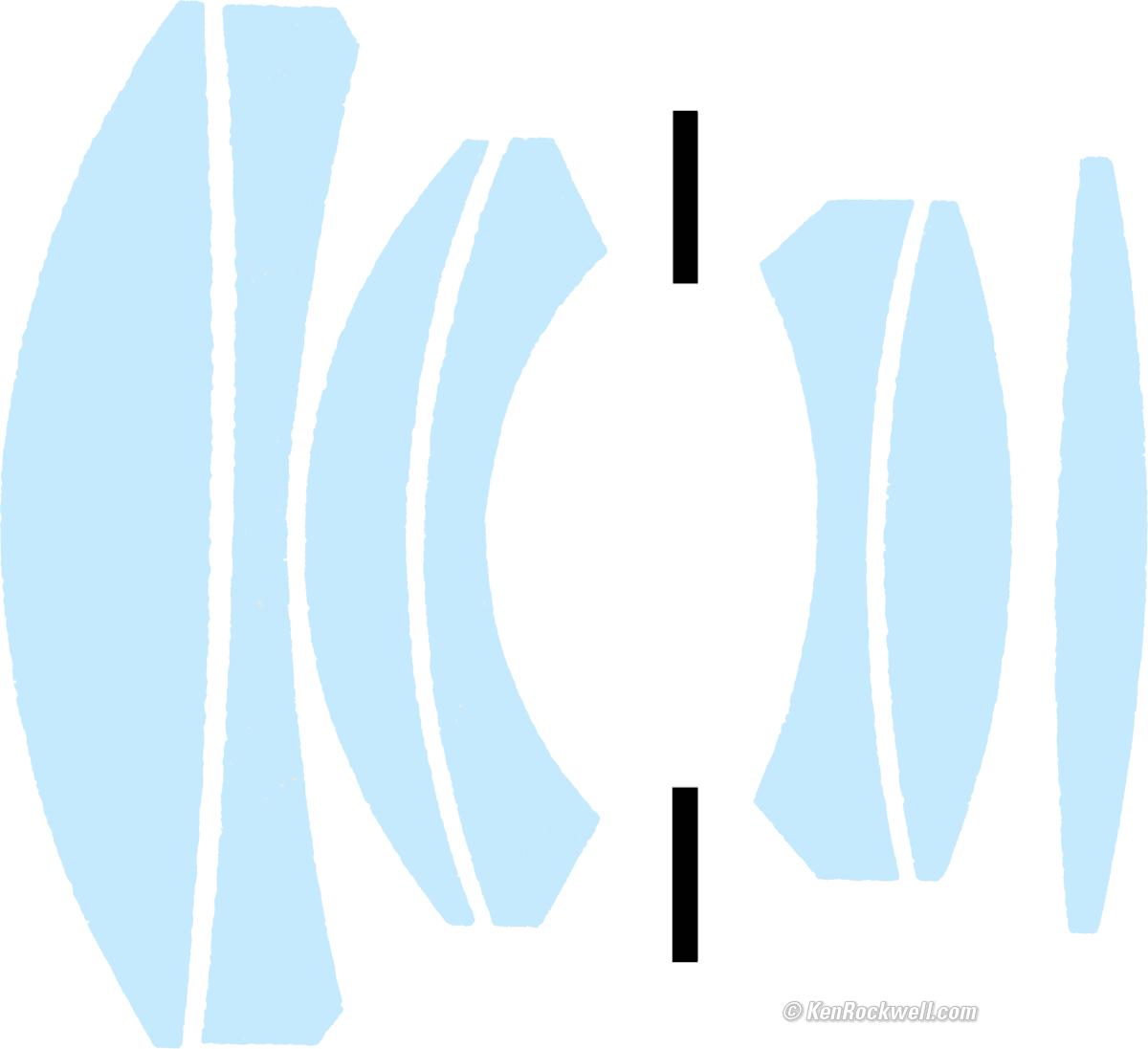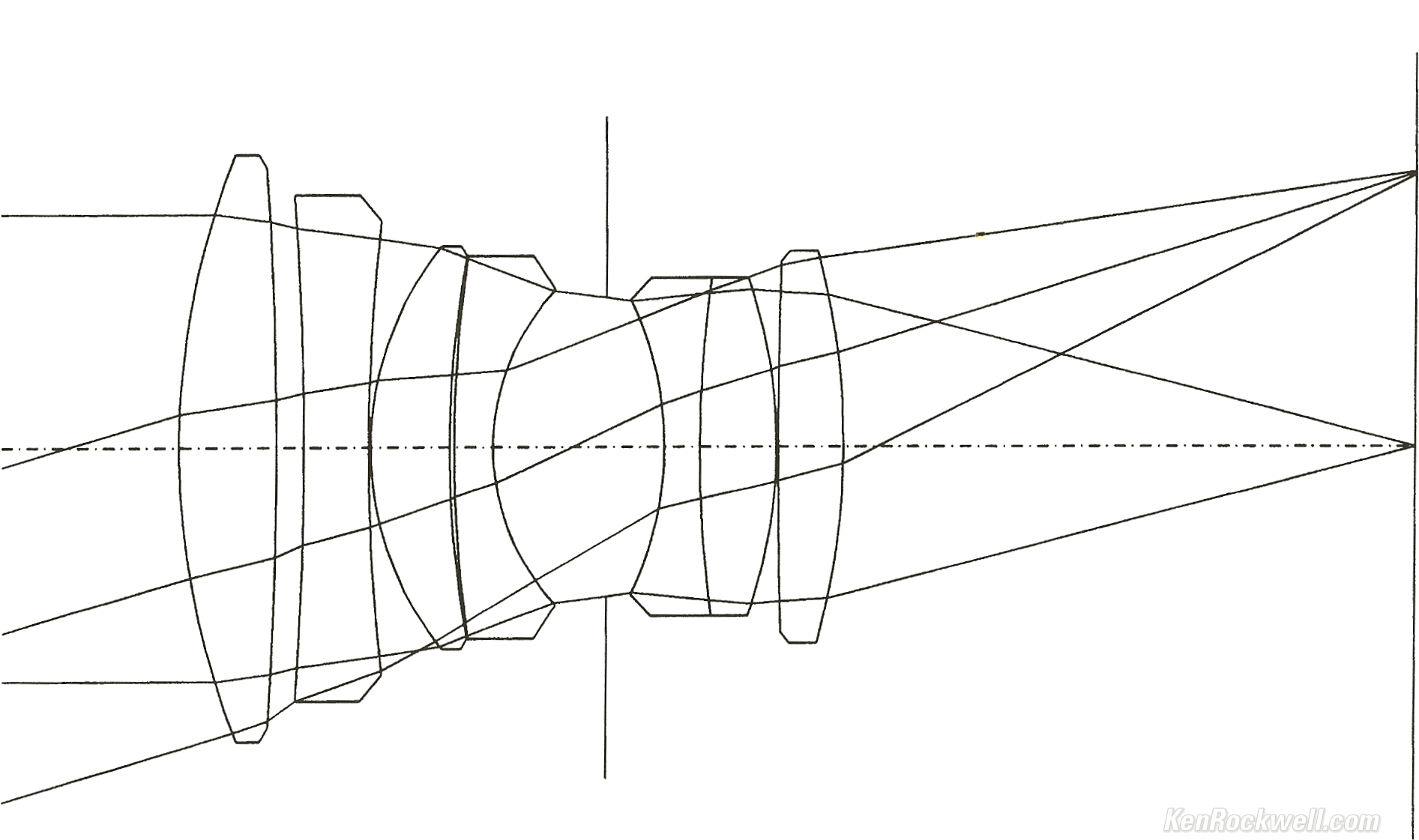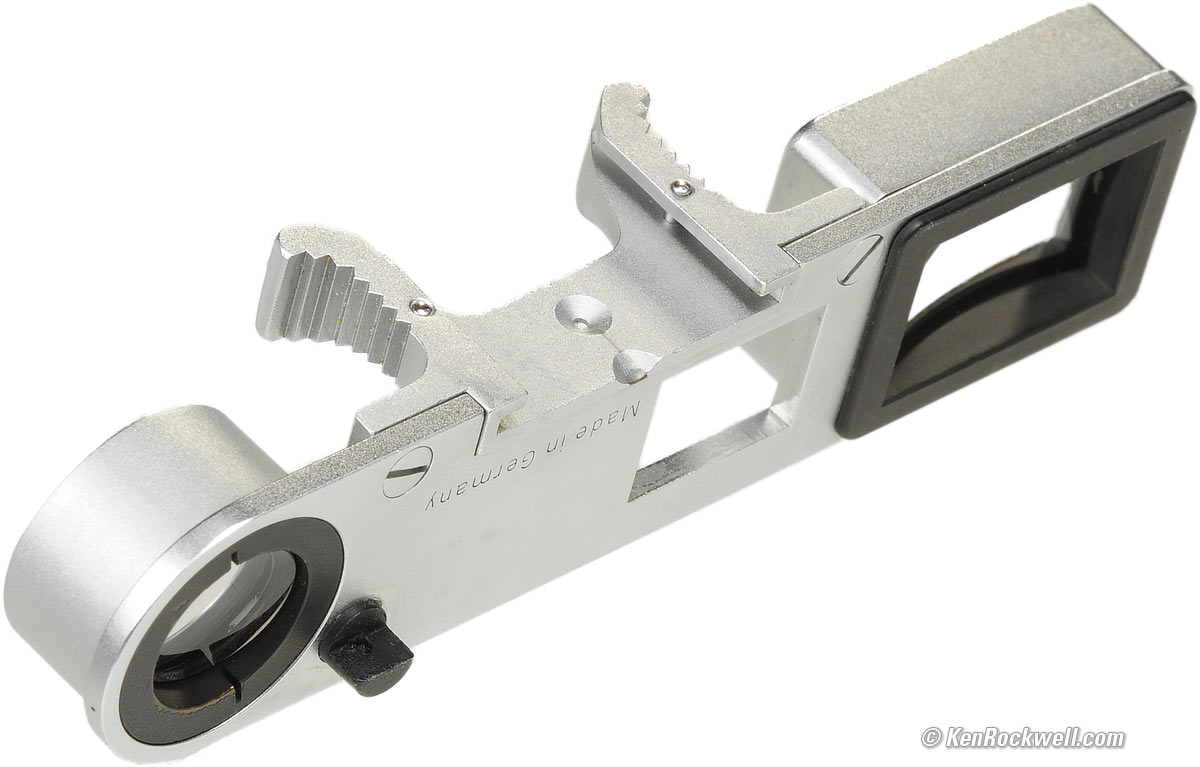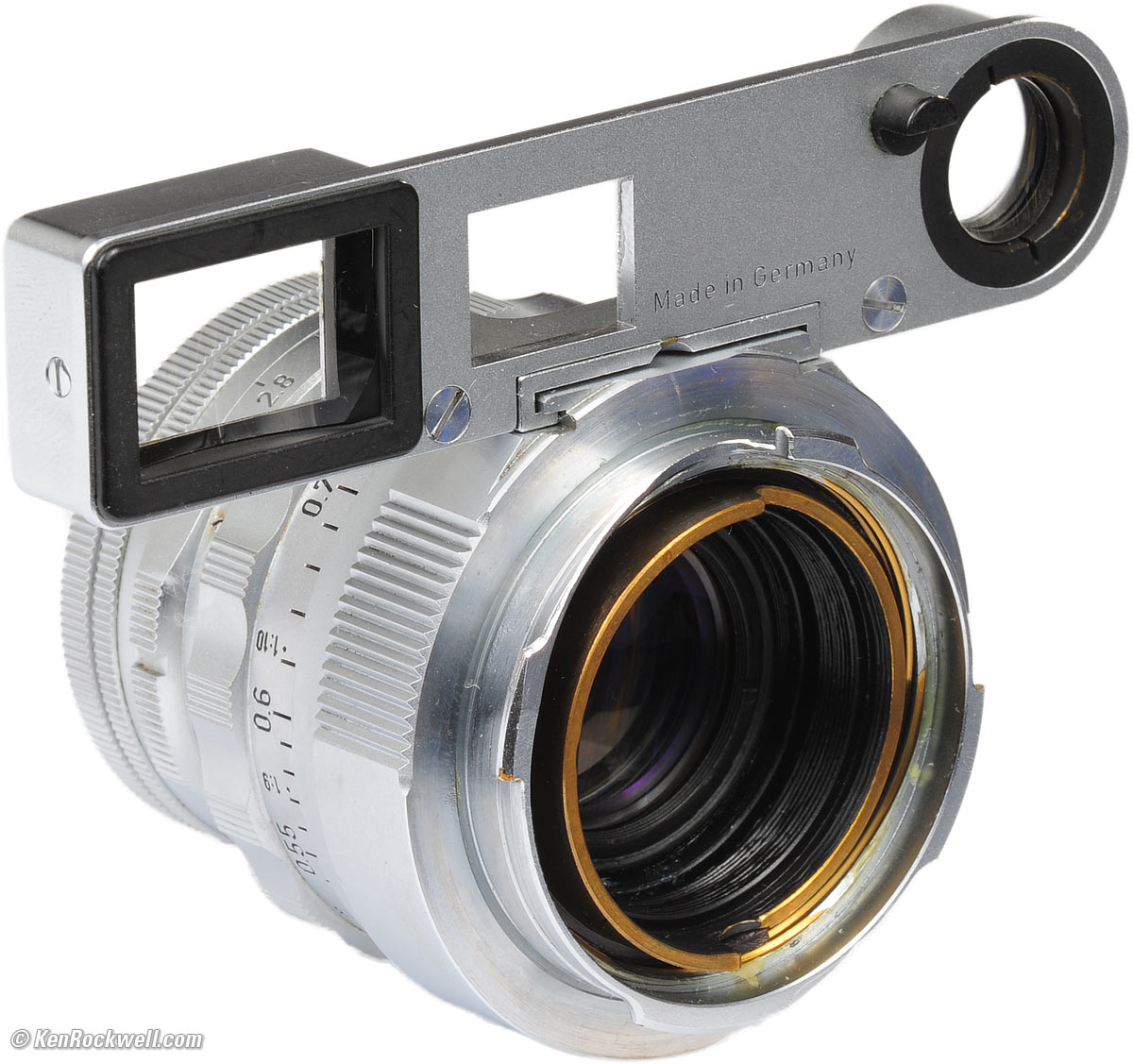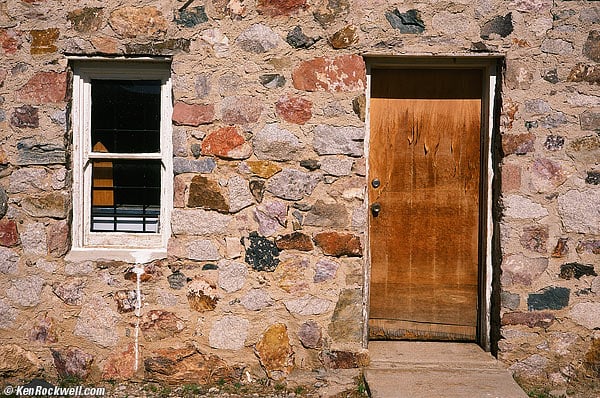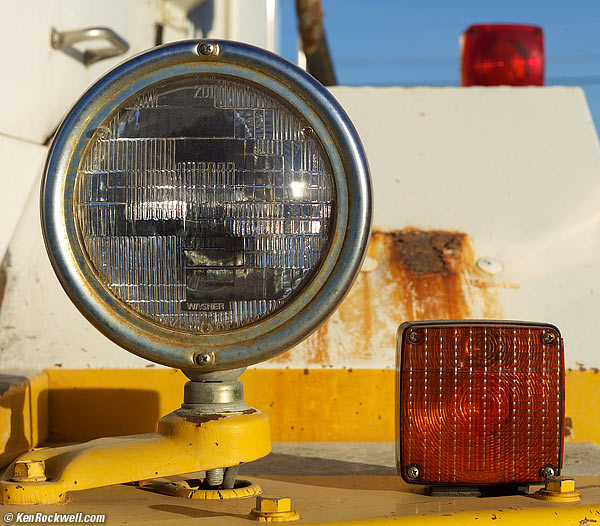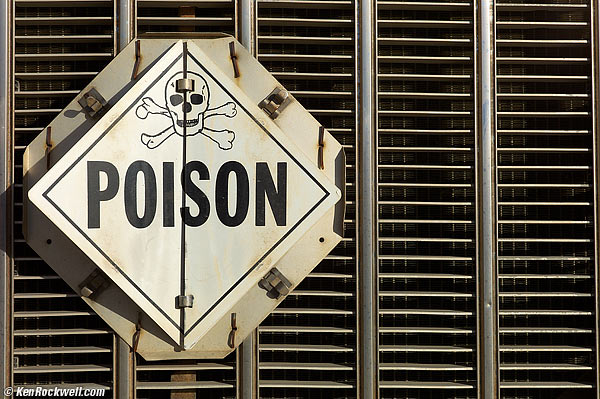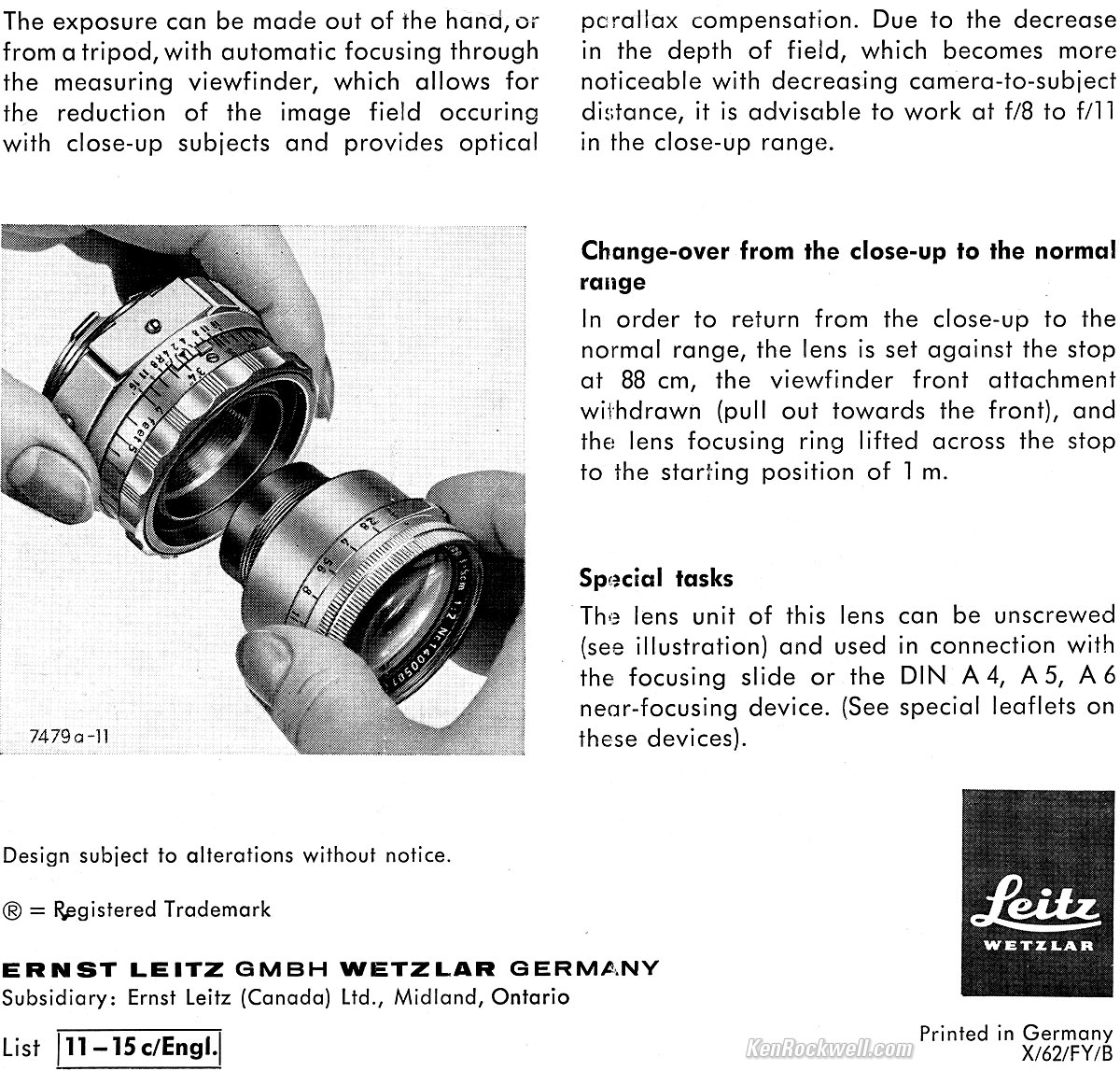Home Donate New Search Gallery Reviews How-To Books Links Workshops About Contact
LEICA 50mm f/2
SUMMICRON with Near-Focusing Range
(1956-1968)
Intro Specs Performance Usage Recommendations
LEICA 50mm f/2 SUMMICRON with Near-Focusing Range (39mm filters, near-focusing range to 478mm, 12.0 oz./339g + 1.9 oz./52g finder attachment, SOMNI or 11 918, about $1,200 used). Vergrößern. This this free website's biggest source of support is when you use these links, especially this link to them at eBay (see How to Win at eBay.) It helps me keep adding reviews of this ancient stuff when you get yours through these links, regardless of the country in which you live. Thanks! Ken.
February 2018 LEICA reviews LEICA lenses lesser-brand reviews
Sample Images:
Falls, Yosemite, 26 February 2011. (1963 LEICA M3, LEICAMETER MR-4, 1957 LEICA SUMMICRON 50mm f/2 with close-focusing range, f/5.6 at 1/60, 39mm LEITZ Or orange filter, no tripod, frame 31 of roll 1 of Kodak T-Max 100.)
Yosemite in Winter February 2011.
Route 66 February 2010
Route 66 February 2011
Death Valley February 2013.
More at Sharpness.
See also:
Details of other LEICA 50mm f/2 lenses
LEICA SUMMICRON-M 50mm f/2 Review (1979-today)
LEICA SUMMITAR 50mm f/2 Review (1939-1953)
Introduction top
Intro Specs Performance Usage Recommendations
|
I buy only from these approved sources. I can't vouch for ads below. |
The LEICA 50mm f/2 SUMMICRON with Near-Focusing Range is the greatest lens ever made by LEICA.
This is LEICA's greatest 50mm lens ever, and 50mm is the most important, useful and critical lens in any 35mm or full-frame system.
This SUMMICRON with near-focusing range is LEICA's greatest 50mm lens because:
1.) Its optical performance is not significantly exceeded by any other lens,
2.) Its mechanics are significantly more solid and more precise than any other lens made by anyone — ever. It is a solid-brass scientific masterpiece.
3.) It is the closest-focusing 50mm lens ever made for LEICA M. Today's lenses only focus to 0.7m, not 478 millimeters, but worse, newer lenses don't optimize viewfinder magnification at close distances for correct framing. THe close-up attachment seen below not only recalibrates the rangefinder, it also changes the finder magnification slightly to mirror the slightly narrower angle of view at close range, as well as correcting for parallax.
Every lens before had slightly weaker optics and much weaker mechanics, while later lenses have much weaker mechanical construction. No LEICA lens has ever focused as close or as precisely.
The only SUMMICRON whose optical performance can slightly exceed this lens is LEICA's current 50mm SUMMICRON-M (1979-today), however today's lens only can focus to 0.7 meters, not the 478 millimeters of this great lens.
SUMMICRON with Close-Focus Attachment. Vergrößern.
This lens has two focus ranges: the normal range (1 meter to infinity), and a special near-focusing range that runs from 0.88 meters down to 478 millimeters (0.478m) when one attaches the included near-focusing adapter. Because there are two focus ranges, laymen sometimes use the street name "Dual Range," or the acronym "DR," to describe this masterpiece.
This SUMMICRON with near-focusing range feels like a precision scientific instrument because it is. The focus scale is so precisely engraved that I often can read it to three significant figures when I log my shots. This is LEICA's greatest from their most glorious days of photography. It's been downhill for LEICA ever since, worrying more about special editions and staying in business pitching cheaper equipment and "the experience" than actually making useful photographic instruments like this.
This immortal lens is LEICA's best-made and most useful 50mm lens ever.
Compatibility top
This LEICA SUMMICRON 50mm f/2 with near-focusing range works perfectly with all LEICA's greatest M cameras: the LEICA M3 (1954-1967) through the LEICA M6 (1984-1998).
As LEICA got older and sloppier, looser mechanical tolerances of newer cameras have made them incompatible with some of the features of this extraordinary lens.
Specifically, newer cameras like the LEICA M6 TTL (1998-2002) and today's LEICA M7 and LEICA M9 have out-of-tolerance top plates. Because these top plates are too tall, they interfere with and prevent the mounting of the close-focus attachment. Therefore, the sloppy design of these cameras cheat the user out of the near-focus range.
Worse, more mechanical design defects in the LEICA M9 prevent this lens from focusing any farther than 4 meters! This is because a rogue piece of the M9 descends into the lens' area and interferes with the movement of the len's focus cam.
With the LEICA M9, the lens must be set between 1 meter and 4 meters in order to mount on the camera, and then never attempt to force the lens to focus beyond 4 meters. For the M9, the plain Rigid version of this lens has the same optics, and can focus out to infinity.
Main range |
Near-focus range |
|
| LEICA M3-M6 | OK |
OK |
| LEICA M6 TTL-M7 | OK |
Can't use: eyes won't mount. |
| LEICA M9 | 1-4m ONLY. |
Can't use: eyes won't mount. |
The current LEICA MP just might work properly with this lens; I have not tried it.
Do not under any drunken circumstances attempt to monkey with or modify this lens to work within the limitations of newer LEICAs. If needed, modify your camera to work with this lens. LEICA isn't making any more of these lenses, so don't please destroy your investment.
These are limitations caused by LEICA's sloppier tolerances with newer cameras, not defects in this lens. LEICA has become like Americans, and considers it acceptable to have cameras get fatter as they get older so that this precise beauty of a lens can't function properly on the newest cameras. How can we respect any organization that doesn't respect its own heritage?
LEICA SUMMICRON with Near-Focusing Range 50mm f/2. Vergrößern.
Specifications top
Intro Specs Performance Usage Recommendations
Name
LEICA calls this the LEICA 50mm SUMMICRON f/2 with near-focusing range.
Laymen also call it the "Dual Range" and "DR."
Many lenses, like the 1957 sample seen here, are marked 5cm instead of 50mm.
Optics top
Diagram, LEICA SUMMICRON 50mm f/2. Vergrößern.
Another diagram, LEICA SUMMICRON 50mm f/2. Vergrößern.
7 elements in 5 groups.
Not clear here are that the first two elements are separated by about 1.52mm.
4 elements are of LaK9 glass.
Single-coated.
LEICA 50mm f/2 SUMMICRON close-focus attachment. Vergrößern.
Diaphragm top
LEICA 50mm f/2 SUMMICRON at f/5.6. Vergrößern.
10 blades.
Often curved-in at middle apertures.
It stops down to f/16 with full-stop clicks.
Focus Scale
Precisely tick-marked to allow distance reading often to three significant figures.
Marked also in reproduction ratios.
Close Focus
There are two focus ranges:
Normal range: Infinity to 1.0 meters.
Close-Focus range: 0.88 to 0.478 meters.
The range between 1.0 and 0.88 meters is not available because in this range the mechanism is employing range-switching technology to optimize itself for the close-focus range.
Maximum Reproduction Ratio
1:7.5, marked.
1:7.3, actual.
Filters
39 x 0.5mm (E39).
Size top
57.07mm (2.009") diameter by 43.18mm (1.700") extension from flange.
53.73mm (2.115") long overall.
Weight top
Lens alone: 11.965 oz. (339.2g).
Lens with eyes: 13.817 oz (391.7g).
Eyes alone: 1.855 oz. (52.5g).
Lens with eyes and period caps: 14.590 oz (413.7g).
Caps top
The front cap is any of the standard chromed-brass, Hungarian yak-felt lined press-on A42 caps. A crappy little 39mm snap-in will work, but is disrespectful.
The rear cap is the standard 14 269 M rear cap.
Hood top
LEICA 12 585 hood (fits only SUMMICRON from 1953-1994). expand.
I use the 12 585 vented hood. Any other A42 clip-on 50mm hood from any era also works fine.
Part Numbers top
SOMNI or 11 918.
Quality top
Made in the Holy City of Wetzlar, Germany.
MADE IN GERMANY.
Performance top
Intro Specs Performance Usage Recommendations
Overall Bokeh Distortion Ergonomics Falloff
Finder Blockage Flare and Ghosts Focus Lateral Color
Overall performance top
This LEICA 5cm SUMMICRON f/2 with near-focusing range is a high-water mark lens for LEICA, their finest ever.
Its optics are not appreciably surpassed by any lens today, and its mechanics are the best ever created by LEICA.
Bokeh performance top
Bokeh, the character of out of focus backgrounds, not simply how far out of focus they are, is fair to neutral.
If you want good bokeh, the only LEICA 50mm lenses with good bokeh are today's LEICA SUMMILUX-M 50mm f/1.4 ASPH and Zeiss 50mm f/1.5 Sonnar ZM.
Distortion performance top
The LEICA SUMMICRON 50mm f/2 Dual Range has no visible distortion.
This invisible distortion can be corrected for more critical use by plugging these figures into Photoshop's lens distortion filter. These aren't facts or specifications, they are the results of my research that requires hours of photography and calculations on the resulting data.
Correct with |
|
10' (3m) |
-0.7 |
© 2011 KenRockwell.com. All rights reserved.
Ergonomics performance top
LEICA SUMMICRON 50mm f/2 DR. Vergrößern.
Ergonomics are perfect.
The aperture clicks with a fingertip.
The focus is slightly stiffer than other LEICA lenses because there is a longer helicoid to encompass both focus ranges.
See Usage for how to use the close-focus device, which works extremely well and easily.
Falloff (darker corners) performance top
The LEICA 50mm f/2 SUMMICRON has some slightly visible falloff at f/2, and none as stopped down.
I've greatly emphasized it below by shooting a gray field and presenting it against another gray field.
Falloff on M9 at 4 meters, no lens profile:
© 2011 KenRockwell.com. All rights reserved.
|
Finder Blockage performance top
None, at any distance.
This is another reason this dual-range SUMMICRON is so superior to special-purpose lenses, like the ultra-high-speed SUMMILUX.
Flare and Ghosts performance top
Flare and ghosts aren't a problem.
I've never seen any, but haven't gone out of my way to excite them, either.
Focus performance top
Focus accuracy is a personal issue between your sample of body and your sample of lens. No two samples match if you start looking too hard; this is a limitation of the mechanical technology.
This said, this particular sample focuses perfectly on every LEICA on which I've tried it. There's a lot to be said for LEICA's traditional old-world craftsmanship.
Lateral Color Fringes performance top
I've never seen any color fringes.
Materials and Construction performance top
This D. R. SUMMICRON is the greatest 50mm ever made by LEICA. It sets a standard which LEICA has never again met, although the chromed-brass version of today's LEICA SUMMILUX-M 50mm f/1.4 ASPH comes close, if it weren't for the ASPH's dinky plastic focus tab.
It's all solid chromed brass, with brass focus helicoids and mount. The only plastic is the red index ball.
All markings are deeply engraved and filled with paint.
Rear, LEICA SUMMICRON 50mm f/2. Vergrößern.
Sharpness performance top
These low-resoluton sample images link to large files:
Route 66, 2010. (12MB © JPG from Velvia 50)
Volvo, Barstow, 2011. (6 MB © JPG from LEICA M9 DNG.)
This junk truck was distorted; it's not the lens.
Barstow, 2011. (3 MB © JPG from LEICA M9 DNG.)
Barstow, 2011. (6 MB © JPG from LEICA M9 DNG.)
See also my 2010 Route 66 , 2011 Route 66 and Yosemite in Winter, February 2011 galleries.
The more you know about photography, the more you know that lens sharpness doesn't matter.
This said, this is a very sharp lens. It's always sharp and contrasty, usually better than today's newest zooms.
If you'd rather count pixels than Pulitzers, the region of image height about 15mm (a ring larger than the height of the image, but not as wide as its width) is the softest area of the image. Counting pixels at larger apertures, it can be a little less sharp than the newest 50mm SUMMICRON-M, but not enough for me to want to use the wimpy new SUMMICRON-M, especially with its pathetic little hood that keeps slipping down, instead of this optical masterpiece from the 1950s.
In actual photography, shoot at f/2 if you need it. It's just as sharp as stopped down.
Look at the full-resolution samples. This ancient lens is sharper then just about any lens today, short of another fixed 50mm lens.
Sunstars performance top
The SUMMICRON's 10-bladed diaphragm can create 10-pointed sunstars on brilliant points of light.
Due to the curved nature of the blades, it rarely does.
Usage top
Intro Specs Performance Usage Recommendations
As we expect from the golden days of LEICA, the close-focus range is very easy to use.
Simply photograph normally. If for some reason the lens won't focus closely enough and you hit the stop at 1 meter in the normal range, simply:
1.) Pull the focus ring away from the camera and turn it towards closer distances.
2.) It will stop, locked at 0.88 meters until you attach the adapter.
3.) Release the focus ring.
4.) Take the close-focus adapter from your breast pocket, and slip-on the adapter. You can do this all by feel.
5.) You now can focus in the close range. The adapter even compensates for the increased magnification for perfect framing!
Likewise, if you're in the close range and need to focus farther away, when the lens hits the stop at 0.88 meters:
1.) Pull the adapter forward and off the camera,
2.) Put it away in your breast pocket,
3.) Pull the focus ring away from the camera and rotate it towards the farther distance, and
4.) Release the focus ring and focus normally.
You can do all this without ever taking your eye off your subject.
Instructions, LEICA SUMMICRON 50mm f/2. Vergrößern.
Instructions, LEICA SUMMICRON 50mm f/2. Vergrößern.
Use on the LEICA M9
On the M9, set the lens to 2 meters before mounting.
Don't force the lens beyond 4 meters; it will only focus between 1 meter and 4 meters.
The close-up attachment will not mount; the top of the M9 is too tall.
Use on the LEICA M6 TTL and LEICA M7
On these cameras, the close-up attachment will not mount because the tops of these cameras are too tall.
This lens will work great in its usual 1 meter to infinity range.
Recommendations top
Intro Specs Performance Usage Recommendations
This SUMMICRON 50mm f/2 with close-focus range is my favorite 50mm lens. I wish that the LEICA M9 was made to appropriate tolerances so that it could take advantage of all the focus ranges of this lens, but no problem, I use this lens on the LEICA M3.
The restrictions on the M9 aren't as much of a problem as you'd imagine. The M9 will not allow this lens to focus beyond 4 meters (12 feet), but so what: if you're that far away, you're not close enough. Either take a few steps closer, or slap on a 90mm lens for a much stronger picture.
If you find these reviews of special-interest gear helpful, this free website's biggest source of support is when you use these links, especially this link to them at eBay (see How to Win at eBay). You can get them locally in Southern California at OC Camera. It helps me keep adding reviews of this ancient stuff when you get yours through these links, regardless of the country in which you live. Thanks! Ken.
Hoods
Use a 12 585 vented hood, and pop a 55mm plastic snap cap into the front of it. You'll never need to remove the hood, except to change filters.
I'd never reverse the hood and mess with a cap on the back of all this; I just leave the hood alone and pop a cap over its front.
Caps
If you don't use a hood, use only the press-on chromed-brass caps from its era. They slide on, even over a filter, and don't come off.
Don't use a nasty snap-in 39mm plastic cap. They fall off.
Filters
Use only period chromed-brass LEICA E39 filters.
Other current B+W, Hoya and new LEICA filters work, but the lens won't look as good with a dinky black filter on it. At least the B+W are still brass, while the others cheap-out with aluminum.
Service
If you need service, I've had Gus Lazzari work on mine. He does incredible work.
It is quite likely that any sample, since these are 50 years old, will have accumulated some internal haze that ought to be cleaned.
© Ken Rockwell. All rights reserved. Tous droits réservés. Alle Rechte vorbehalten.
Help Me Help You
I support my growing family through this website, as crazy as it might seem.
The biggest help is when you use any of these links when you get anything. It costs you nothing, and is this site's, and thus my family's, biggest source of support. These places always have the best prices and service, which is why I've used them since before this website existed. I recommend them all personally.
If you find this page as helpful as a book you might have had to buy or a workshop you may have had to take, feel free to help me continue helping everyone.
If you've gotten your gear through one of my links or helped otherwise, you're family. It's great people like you who allow me to keep adding to this site full-time. Thanks!
If you haven't helped yet, please do, and consider helping me with a gift of $5.00.
As this page is copyrighted and formally registered, it is unlawful to make copies, especially in the form of printouts for personal use. If you wish to make a printout for personal use, you are granted one-time permission only if you PayPal me $5.00 per printout or part thereof. Thank you!
Thanks for reading!
Mr. & Mrs. Ken Rockwell, Ryan and Katie.

